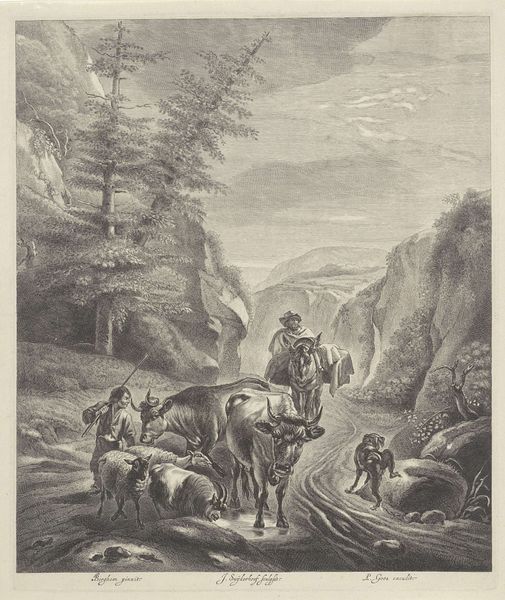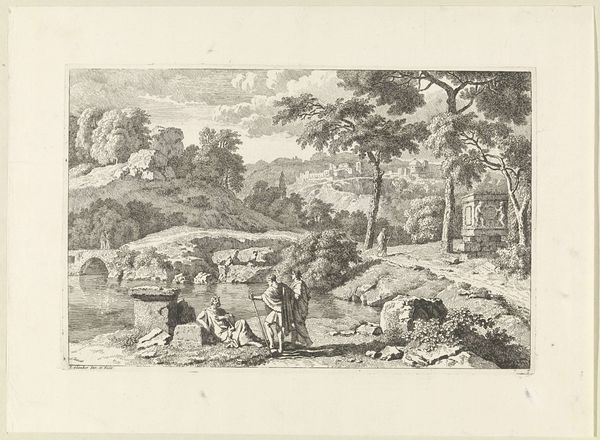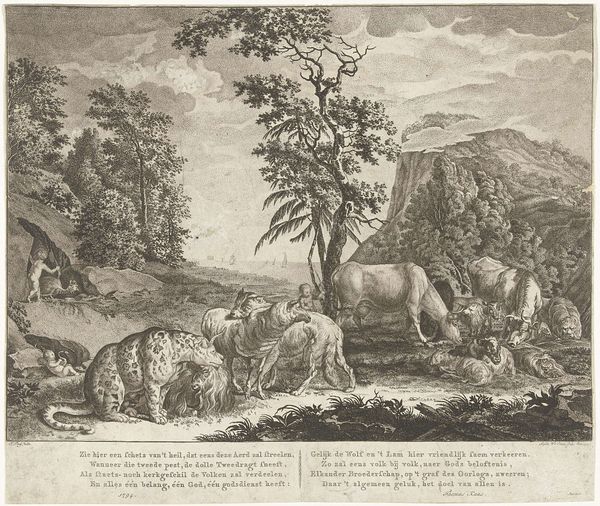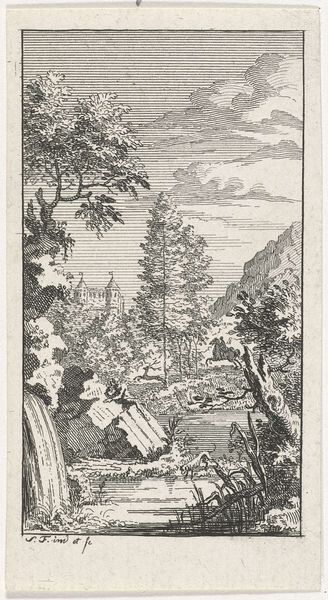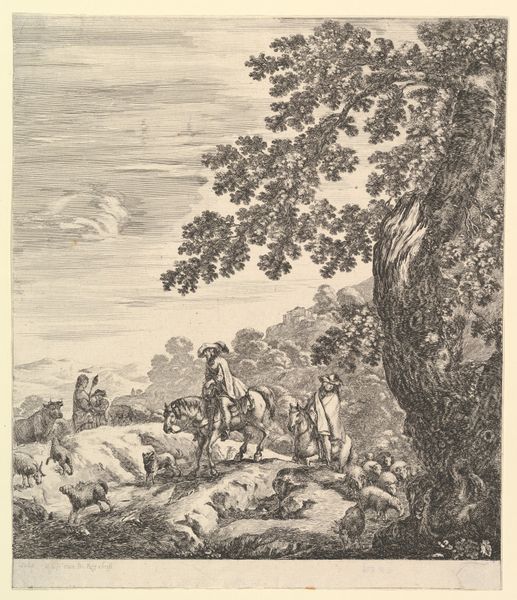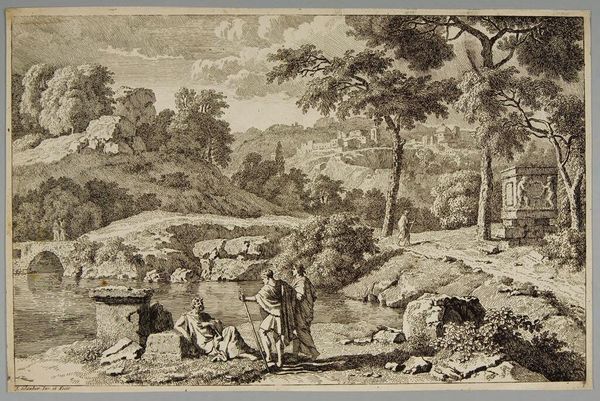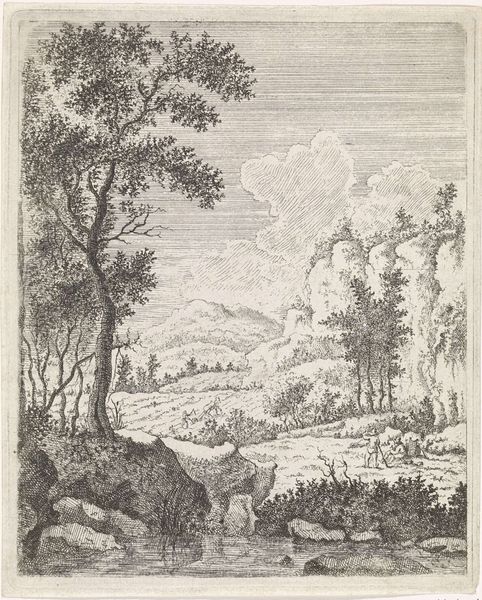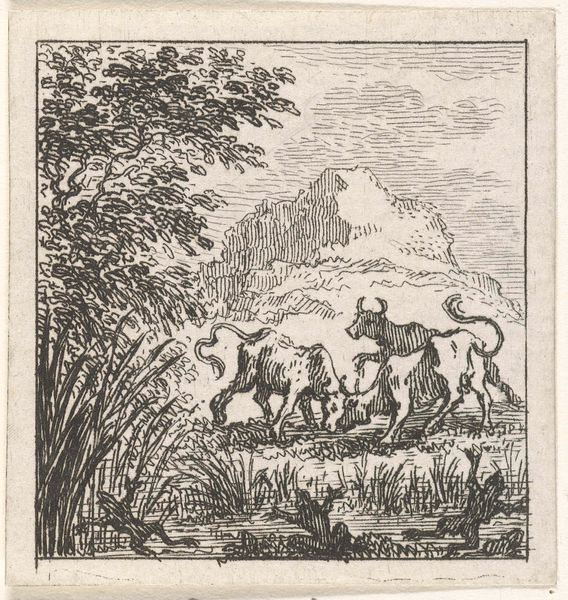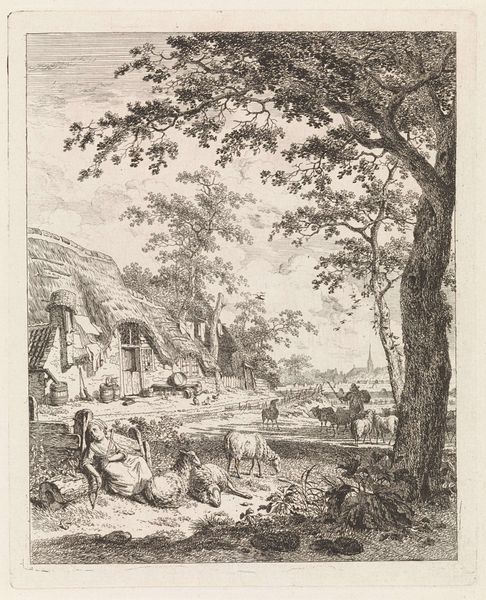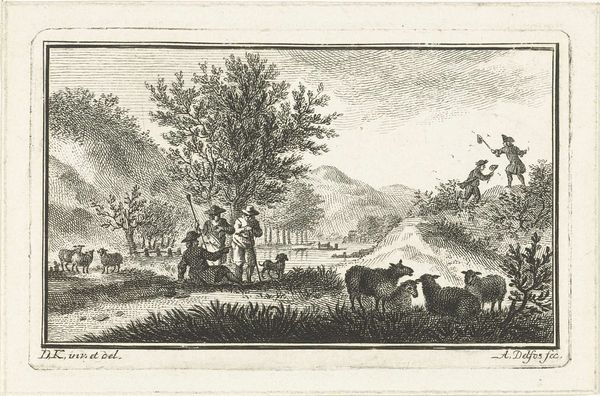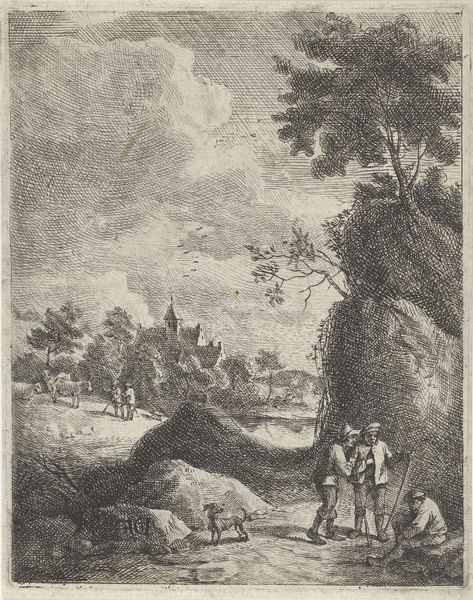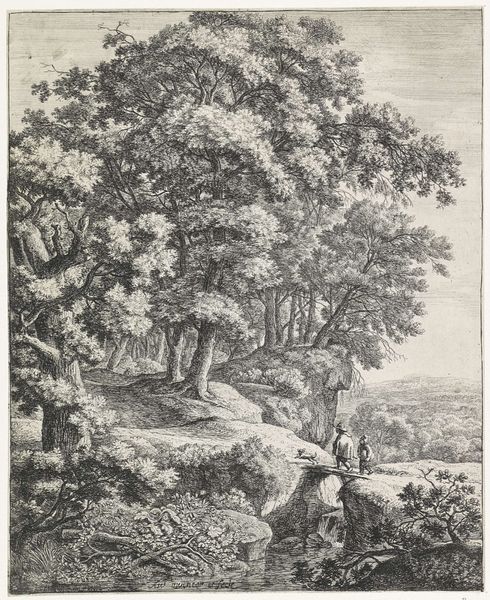
print, engraving
#
african-art
# print
#
landscape
#
figuration
#
genre-painting
#
history-painting
#
engraving
#
realism
Dimensions: height 289 mm, width 173 mm
Copyright: Rijks Museum: Open Domain
Editor: This is "Khoikhoi bij een kraal met hun vee," made in 1727 by Jan Caspar Philips. It’s an engraving, a type of print. What strikes me is how the scene feels both observed and a little…constructed, almost staged. What's your interpretation? Curator: It’s crucial to recognize that images like this one, created during the colonial era, weren't just innocent depictions. They participated in constructing a very specific, and often biased, view of non-European peoples. How do you think the composition might contribute to that? Editor: Well, the Khoikhoi are shown with their livestock and dwellings. They are clearly outside, while in the background others climb the terrain beyond. Maybe they're positioning them within a hierarchy of "civilization," with Europeans being more developed? Curator: Precisely. The title itself, with the now-outdated term "Hottentotten," reveals a derogatory attitude that reduces a diverse group of people to a single, easily categorized 'other'. Also consider where this print would have circulated - most likely within European society. The image reinforced certain stereotypes of these indigenous peoples, to legitimize colonization. Editor: So, it’s less about accurately portraying a specific scene and more about perpetuating a narrative for a specific audience. Curator: Exactly. The 'realism' here is a carefully curated representation that reinforces existing power structures and creates a sort of "us versus them" dichotomy. It influenced public perception, in ways we are still unpacking today. What can we take away from that idea of constructed views? Editor: Understanding that what looks like a neutral depiction can actually carry a lot of social and political baggage is really eye-opening. Thanks for clarifying. Curator: It reminds us to be critical of imagery, particularly historical depictions of other cultures, and consider whose perspective is being presented.
Comments
No comments
Be the first to comment and join the conversation on the ultimate creative platform.
